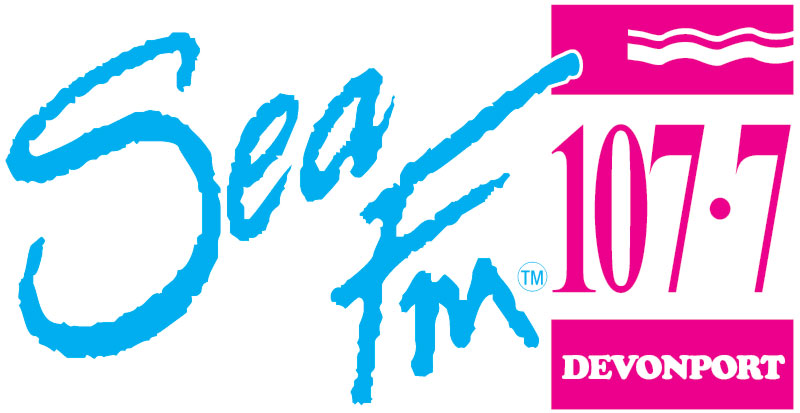The Julie Burgess was originally built as a fishing ketch and was the brainchild of Harry Burgess, whose family had pioneered the crayfishing industry in the 1890s.
Captain Harry Burgess commissioned Launceston Shipbuilder Ned Jack to build the new fishing boat to replace the Ada Burgess which had been wrecked in 1934. Ned was unwilling to venture from the normal design but Harry finally convinced him, and the ketch named the Julie Burgess, after Harry’s wife, was launched in the Tamar River in 1936. She was built from blue gum, Huon pine and other Tasmanian timbers and some of her original timbers were able to be used in her reconstruction. She contained a ‘wet well’ amidships, where she could hold 4000 crayfish in seawater. With this amount of moveable cargo below deck, the extra width made her extremely stable in the Bass Strait conditions, which due to its average depth being only 50 meters, can produce a treacherous sailing environment.
The extra width also makes her extremely passenger-friendly, and, with the ‘wet well’ being replaced with a cabin containing sleeping berths, toilets, cooking facilities and other creature comforts, the Julie Burgess is indeed a comfortable ship. She is also fitted with a diesel engine.
During her career, she was also used as a trading vessel between Tasmania, Victoria and the Islands, and during WWII she was chartered by the Commonwealth and used to service the Bass Strait undersea cable.
Restoration
The Original Specifications
A topsail ketch rigged fishing boat, Julie Burgess measured 64 feet (19.7m) long with a beam of 16 feet (4.9m), a draft of 7 feet (2.lm), and displacement tonnage of 64 tonnes with a registered tonnage of 34tonnes.
Fully rigged, Julie Burgess carried a suit of seven sails, consisting of an outer jib, jib, fore stay-sail, mainsail, main topsail, mizzen, and mizzen topsail. Under full sail, her sail area was 2000 square feet (185.8 sqm).
Builder, Ned Jack selected Tasmanian Blue Gum for the frames and planking, Huon Pine for the bulwarks and rails and Oregon Pine for the decks, masts, and spars. A small (40hp) Kelvin Kerosene engine was fitted to assist and aid the navigation of ports around the Victorian and Tasmanian coastlines. Later in 1964, a Gardner 6LX engine was fitted.
After a career of approximately fifty years working the fishing grounds of the Victorian and Tasmanian coasts, the Julie Burgess was laid up in Devonport. Apart from her participation in the 1988 Bicentennial Tall Ships Race, she remained laid up until 2009 when the Devonport City Council purchased Julie Burgess from Captain Dick Burgess as a result of a Federal Government grant.
Work commenced in 2010 on the complete refitting of the Julie Burgess to convert her from a retired fishing boat to a passenger-carrying working exhibit for the Bass Strait Maritime Centre.
At all times during the restoration, the principles embodied in the Barcelona Charter were followed. The aim was to retain the ship’s original silhouette and sail plan while incorporating improvements that would enable her to sail as a commercial vessel carrying fare-paying passengers. On occasions during the restoration process, compromises had to be made. These occurred either because materials to replace like for like were not available or current maritime survey regulations needed to be met. All alterations made to the original design of the vessel or the original equipment fitted to the ship when first built were subject to approval by the consulting maritime architect and the surveying authority.
Restoring the Timbers
Hull
In restoring the hull to a seaworthy condition, significant sections of the hull had to be replaced as existing timbers were unsound. Shipwright Rudi Dahms, in consultation with the MAST marine surveyor, decided which timbers needed to be renewed.
Changes also had to be made to meet current survey regulations; namely moving the forward companion way to allow access to the refurbished forward cabin, installing watertight bulkheads, fitting sponsons, and a slipper keel.
To enable the fitting of the main cabin, the wet well was taken out and a coach-house installed.
An overlying complication during the entire restoration was the difficulty in obtaining good quality timber of the preferred type or size at a reasonable price. In some cases, budgetary constraints meant that compromises had to be made in terms of the timber used in the restoration process.
Framing
On slipping the vessel in 2010, she was stripped of all internal fittings and the wet well so that work could commence on renewing sections of the hull. In some places frames or sections of frames had to be replaced. Tasmanian Oak was used for this purpose.
To strengthen the vessel, additional longitudinal stringers were installed on both sides of the ship. Framing timbers (either Celery Top Pine or Tasmanian Oak) were cut to size and shape by the shipwrights using chainsaws or electric saws, installed and then shaped with electric planers.
In rebuilding the ship’s framing, three watertight bulkheads were installed, dividing the ship into four separate sections to meet survey requirements (Forecastle, Main Cabin, Engine Room, and Master’s Cabin).
Planking
Large sections of planking had to be replaced as it was found to be rotten. Celery Top Pine was used to replace planking that was found to be unsound. Planks were cut to size, then placed in a steamer, (steaming took between 2-3 hours) then clamped into place. After cooling off, it was worked into place, shaped, then fastened to the frame using either stainless steel bugle screws or coach bolts and nuts. Fastenings were then covered with a wooden plug inserted by hand.
Decking, Stanchions, Bulwarks, and Rails
It was found that the decks, stanchions, bulwarks, and rails were in very poor condition and had to be completely replaced. Deck beams were crafted from recycled bridge timbers sourced from Van Eck Constructions and others. These timbers were cut to length with chainsaws, installed and shaped with electric planers.
Stanchions, capping rail stringers, and cover boards were built from Celery Top Pine with bulwarks being made from Huon Pine planks. The deck was constructed using two layers (diagonally opposed) of Marine Ply covered with Celery Top Pine planking which was then caulked. This method for building the deck, was as a result of the inability to source the correct size timber planking.
Deckhouses
The aft deckhouse was reclad to original using boat grade Oregon Pine planking. The coach-house to cover the new main cabin was built using laminated Tasmanian Oak for the frame and roof and Celery Top Pine for the sides and ends.
Sponsons
An additional timber rail (sponson) was fitted along both sides of the hull just below the gunwale for a length of twelve metres. The timber sponson was then reinforced with a 50 x 10 S.S. Rubbing rail.
The sponson was constructed from laminated hardwood and can be replaced if damaged. Its purpose is to protect the vessel’s planking and topsides during berthing manoeuvres.
Slipper Keel
To add strength and to protect the original wooden keel, a steel slipper keel was fitted along the length of the ship and keyed to slippers on the stem and stern posts, thus securing the vessel from end to end.
Paints and Preservatives
Prior to painting, all fastenings were covered with a wooden plug. All the planks were caulked using a hemp/tar caulking ribbon put in place with a caulking iron. This was then sealed with a layer of Silaflex. The hull was painted with a grey primer, followed by a black anti-fouling below the waterline, a burgundy stripe along the waterline, white topsides, marigold masts and spars, and pale ochre cabin tops. Decks were initially sealed with an lntergrain clear finish but later a lanolin-based timber seal was used.
Masts and Rigging
The refurbishment and conservation of the masts, rigging, and sails, was an easier task given that the vessel had not used her sails for a long period other than during her participation in the 1988 Bicentennial Tall Ships race.
To take place in this event, considerable work was undertaken to refurbish all of the masts, rigging, and sails. When the vessel returned from Sydney, the topmasts, bowsprit, gaffs, sails, and attendant rigging was removed and placed into storage.
When the restoration project commenced, the main and mizzen masts were lowered along with the related standing and running rigging. This equipment was removed to an off-site warehouse for inspection and conservation along with those items taken out of storage.
With the assistance of highly skilled and experienced volunteers, all of this equipment was restored to full working condition using traditional techniques and materials or if necessary, an appropriate substitute.
Main Mast/Main Top Mast
On lowering the main mast it was found to be in sound condition and all that was required was for it to be cleaned and repainted. The main top mast was found to be in good condition due to it having been in storage and cleaning and repainting was all that was required. At the appropriate time during the restoration, both masts were re-stepped and standing rigging installed using traditional techniques and materials.
Special Note: Main Mast
During 2017, it was observed that while under sail and bearing load, the upper section of the main mast was warping. It was decided that as part of the annual slipping to meet survey requirements, a new mast would be made, and the old mast replaced.
A new mast was constructed using Oregon Pine timber. The new mast was built to the original design using the traditional techniques employed in building new spars. The new mast was stepped, the topmast fitted into place and all standing and running rigging reinstalled while the vessel was on the slip.
Mizzen Masts/Mizzen Top Mast
The mizzen mast was found to be defective and a section approximately three metres in length was removed from the bottom. A new piece was fabricated using spar grade Oregon Pine and was refitted to the remaining section on the mast. The mast was reinstalled later with all its standing rigging.
Sails
A new suit of sails was made by Wynyard sailmaker Steven Walker prior to the ship competing in the Tall Ships Race, after which they were placed into storage.
These sails were sent to Steven Walker who inspected them, finding that all of the sails were in good condition and did not require any repairs. Two sails were dirty and these were sent to Sydney to be cleaned so that the complete suit of sails was aesthetically pleasing when fully set.
Paints and Preservatives
The main mast, mizzen mast, booms, gaffs, and bowsprit were repainted a marigold colour, while both top masts were left in their natural dark colour. The upper section of the main and mizzen masts and the lower section of both top masts were painted white where the masts overlap. Where necessary, some sections of standing rigging were coated with preservatives.
Booms and Gaffs
Both booms were removed from the ship. The booms were cleaned and repainted as they were in sound condition and did not need replacement. The gaffs were found to be in poor condition and were replaced by new ones fabricated from spar grade Oregon Pine.
Bowsprit
The bowsprit was brought out of storage and was found to be in sound condition and only required cleaning and painting. The figurehead was carefully removed from the hull, cleaned, repainted, and returned to the vessel at the appropriate stage of the restoration.
Standing Rigging
All the standing rigging was removed to the off-site storage and closely examined. Where necessary rigging that had deteriorated was replaced using original sizes, traditional materials and techniques. All standing rigging wires and stays were replaced with new ones using the same sizes and dimensions of the old.
Running Rigging
As with the standing rigging, all of the running rigging was inspected and where necessary replaced using traditional materials (or an appropriate substitute) and techniques.
Machinery and Fittings
To enable the restoration of the vessel’s hull and timber, all the existing machinery and associated items were removed for evaluation.
Apart from the Gardner main engine and the bronze hull and deck fittings, the steering wheel, steering mechanism and the compass, all other machinery items were deemed to be past their use by date and were scrapped. The main engine was fully reconditioned and upgraded to GLXB specifications, fitted with a new Dong gear box, and reinstalled in conjunction with all the associated plumbing, fuel storage, freshwater storage, toilet, sanitary systems, and electrical systems, including a new GKVA generator.
Above deck, the original windlass, now housed at the Bass Strait Maritime Centre, was replaced by a new hydraulic winch. The hydraulic steering system was completely rebuilt and reinstalled.
A new propeller shaft was fitted along with a dripless seal.
A new bilge pump and alarm system were fitted to service the four compartments, and an automatic fire suppression system was installed in the engine room. The galley was fitted out in accordance with AMSA regulations as were the two toilets.
Navigation, electronics, and aids were installed or reinstalled, including the original compass, new radar, navigation plotter, AIG, VHF radio(s), autopilot, and emergency items as required for the survey.
Electrical Systems
A 6kVA ONAN 240V alternator was installed to power some appliances.
Separate 24V DC batteries were installed for engine starting and domestic use including cabin lights, navigation lights, refrigerator and all electrical pumps.
A 12V DC battery powers the navigation equipment and radio systems.
Project Funding
Devonport City Council had identified the Julie Burgess as an integral part of any ongoing tourism strategies for the city and had been working towards an agreement to purchase the vessel hoping to secure some federal or state funding. Success came as a result of the global financial crisis in 2007 when a federal initiative “Get Communities Working and Local Job Streams Programs” was launched. Devonport City Council completed a submission in 2008 and was duly advised of success in September 2008 in the amount of $1.8 million.
2009 was a year of planning, reports, recruitment, contracts and establishment of the necessary administrative structures in preparation for the purchase and restoration. 2010 saw the start of the project and continued through 2011.






